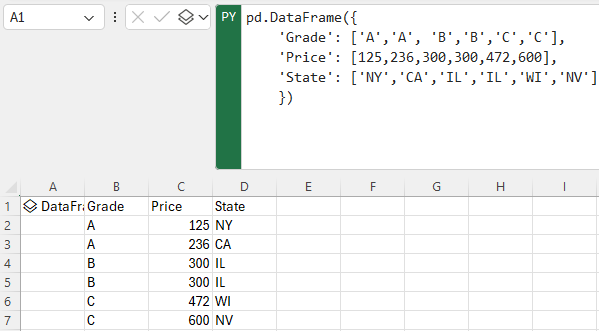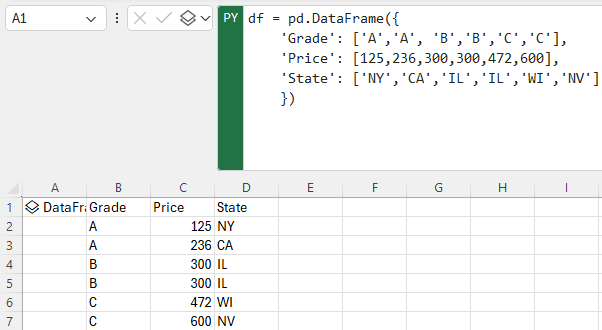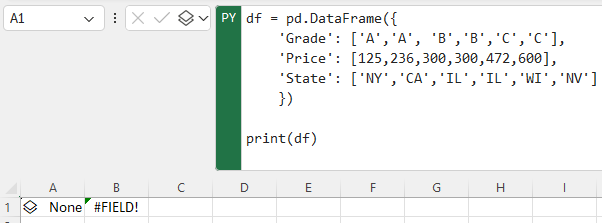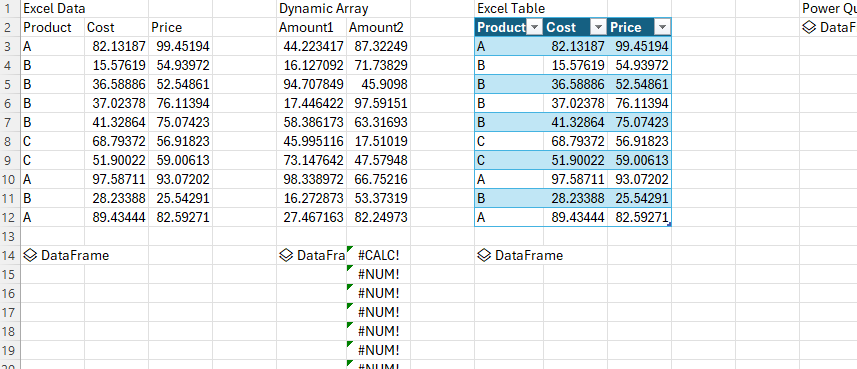As the integration of Python in Excel continues to evolve, there will be a number of tips (and tricks!) to make this integration more seamless and overcome common errors. This is particularly relevant as Python integration is currently in beta. I’ll keep this post updated with the latest changes and new tips as I discover them.
Generate Python Output
I’m using a basic Pandas DataFrame as an example for this section. If I want to define a DataFrame to use in Excel, I can do this by creating a single DataFrame in my Python statement. It is then available for me to preview in my spreadsheet.

I can also save my DataFrame as df. As I’m only creating this one DataFrame, it is available for me in my spreadsheet once again.

However, if I try and print my DataFrame, I get an error. I haven’t explored this particular error in great detail, but it looks like no print statements in Excel.

Furthermore, if I define multiple DataFrames in the same Python statement, only the latest one is made available to me in Excel. This is expected behavior, as Python executes from top to bottom. The df DataFrame is still available for me to reference in other statements, but df2 is what I can preview as output for this particular cell.

This brings us nicely onto the next section, the calculation order of Python statements in Excel and what we need to keep this in mind when referencing other Python statements.
Reference Other Python Statements
It’s important to know how Python statements are processed in Excel, especially when your analysis involves multiple steps. Some key points on how Python statements are calculated and run in Excel:
- Sequential Execution: Python statements in Excel run in sequence, from top to bottom, row by row from left to right. You can use the output from one as input in another, just like linking formulas in Excel.
- Planning Your Analysis: Since everything runs in order, make sure to arrange your Python statements so they process your data correctly. Mistakes in the order can lead to errors or incorrect results.
By “in order”, this means that a Python statement that refers to an input must be to the right or below this input statement. This is the case across cells within a sheet as well as across sheets in a workbook.
#CALC! Error
I ran into this error while trying to create some dummy data with a dynamic array.
Python in Excel doesn’t support references to cells with volatile values, such as cells using the RAND() function. Python formulas that reference cells with volatile values return the #CALC error.
Another reason why you may get the #CALC! error is Python calculations in Excel can only process up to 100 MB of data at a time. If you get this error, you might have to reduce your dataset or try to approach the calculation in a different way.
Conclusion
As I mentioned earlier, I will continue to explore the integration of Python in Excel and update this post as new functionalities become available.
